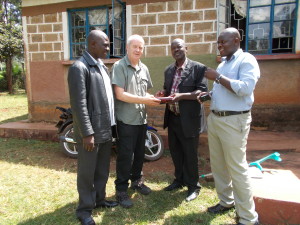When I started this project I naively bought some 3 watt solar panels from a supplier who advertised them as being capable of charging iPhones, and the latest Android smartphones, etc. As the e-readers, the Kindles, require less power than these devices I hoped these panels would be able to easily provide sufficient power to charge the Kindles, even in the UK.
Cutting a long story short, the panels wouldn’t charge the Kindles except occasionally to keep me on-the-hook so I kept going for much longer than I otherwise would or should have done. They didn’t even charge the devices in the peak of the day in Kenya, on the equator. Also their voltage regulators were unreliable, and lost about 1 watt of the 3 watts the panels were claimed to deliver.
To make matters worse, the kindles often froze because the voltage (at around 4v via the regulator) was borderline to trigger the charging circuit which drew current and caused the voltage to drop, then the charging stopped. This allowed the voltage from the panel to increase which restarted the cycle. Eventually these cycles seemed to cause the kindle to freeze.
I discovered Solar panels are considered constant current devices while we want something closer to constant voltage at a given minimum current. Although I considered creating my own homebrew regulators with large capacitors to even out the power delivery, etc. I abandoned the idea as others had tried better solutions and mine was unlikely to work.
Indirectly I was encouraged to try connecting the solar panel, without a voltage regulator to an inexpensive USB battery reserve power device intended to provide portable emergency recharging for mobile phones. Internally their electronics enables them to charge their internal battery @3.6 volts DC while delivering a steady 5V DC output once they’d been sufficiently charged. These devices seemed to do just what I needed for this project and my initial tests are promising. I’ve tried a variety of these portable battery units, including several with integral small solar panels rated at 0.7 watts, which isn’t enough in practice.
I also discovered http://getvolt.dk/en/ an innovative business for concert goers who want to keep their smart phones and iPads, etc. charged beyond the reach of mains power.
Overall, the combination of an external 3 watt solar panel and a smallish USB battery unit seem to be a practical solution for recharging the other electronic devices we’re using, including the Kindles and the 3G WiFi routers.




